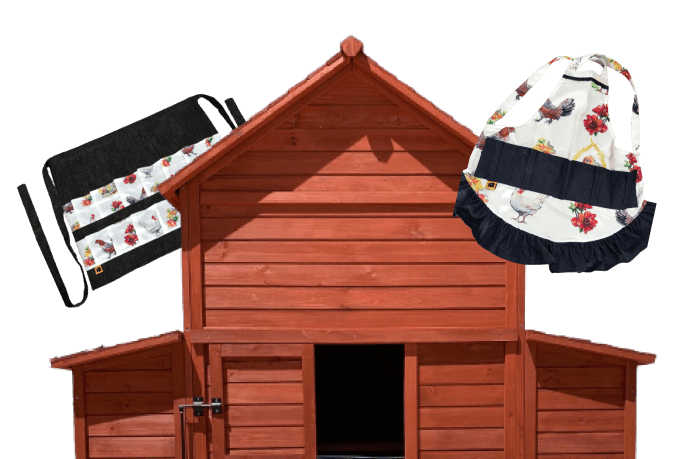Blue Swedish Ducks
Blue Swedish Ducks
The Blue Swedish Duck is one of the oldest domesticated duck breeds and remains a favorite for many today. Known for its hardiness in cold climates and unique blue-gray plumage, this breed is easy to raise and care for.
Its distinctive coloring helps it blend into surroundings, making it less visible to predators. With a calm and gentle temperament, the Blue Swedish Duck is a great choice for families, especially with young children.
Appearance:
-
Feather Color: Blue Swedish Duck has blue-gray feathers, a beautiful and elegant color. The blue is a muted slate color that can range from light grayish-blue to darker blue. The feathers have an iridescence to them especially when they catch the light.
-
Body Type: Medium sized duck with a solid, stocky body. Well proportioned with broad chest and deep body, good for meat production. Not as heavy as some commercial breeds but good yield of high quality meat. Compact and balanced body, can be agile but heavier than some other lighter breeds like Khaki Campbell.
-
Head and Beak: Small head with smooth rounded shape. Beak is orange or yellow and contrasts nicely with blue-gray feathers. Beautiful head and neck.
-
Legs and Feet: Orange legs, beautiful against the blue feathers. Sturdy and strong legs to support the body as it moves. Webbed feet for swimming which is essential for this breed.
-
Size: Medium sized duck, drakes 6-7 lbs, hens 5-6 lbs. Not as big as some other meat ducks but good dual purpose bird for eggs and meat.
Temperament:
-
Calm and Docile: Blue Swedish Duck is calm and docile, easy to handle and good for families and backyard flocks. Friendly and not aggressive, males may show some territorial behavior during mating season. Overall pleasant to have around and quieter than some other breeds.
-
Curious and Friendly: Blue Swedish Ducks are curious and love to explore. They are often seen waddling around, foraging for food and interacting with other ducks or animals. Friendly and good for mixed flocks, they get along well with other poultry, chickens and other duck breeds.
-
Good for Free-Range: Blue Swedish Duck is good for free-range systems as they love to forage. Natural foragers, they search for insects, small plants and seeds. Good for those who want to let their ducks roam and help with pest control. But can also be kept in pens or coops as long as they have enough space to move around and access to water for swimming and bathing.

Egg Production:
-
Moderate Egg Layers: Not as prolific as some other egg laying breeds like Khaki Campbell but still a good egg producer. Hens lay 180-200 eggs per year. White or off-white eggs, slightly larger than chicken eggs. They lay more frequently in spring and summer.
-
Egg Quality: Eggs are rich in flavor, creamy texture and firm. Good for baking and cooking, slightly richer than chicken eggs. Nutritious with higher fat content than chicken eggs, good for many recipes.
-
Consistent Egg Production: Blue Swedish Ducks are relatively consistent in egg production, hens will lay throughout the year but may slow down during colder months. If kept in environments with sufficient daylight and warmth they can lay eggs consistently.
Health and Care:
-
Hardy and Resilient: Blue Swedish Duck is a hardy breed, can adapt to many climates. Well suited for colder climates due to thick plumage but also do well in warmer areas as long as they have access to clean water and shelter from extreme temperatures.
-
Low Maintenance: Low maintenance, don’t require special care. Thrive on balanced diet of high quality duck feed, fresh greens, grains and foraged food. Regular access to clean water is essential for hydration and bathing and to maintain healthy plumage.
-
Health: Like all ducks, Blue Swedish Ducks can be prone to common poultry diseases such as coccidiosis, mites or duck viral enteritis. Keeping a clean living space, fresh food and water and regular health checks will help minimize the risk of disease. Their water area should also be cleaned regularly to prevent infections or illnesses.

Housing:
-
Space: Blue Swedish Duck needs space to move around. While they can be kept in a pen, it’s best to provide them with access to a larger area where they can forage, swim and exhibit natural behavior. A cozy duck house that provides shelter at night is ideal.
-
Clean Water: Ducks need access to clean water not only for drinking but for bathing and cleaning their bills. Blue Swedish Ducks are no exception and having access to a small pond, kiddie pool or other shallow water source is important for their health and well-being.
-
Predator Protection: As they are a calm and friendly breed, Blue Swedish Ducks can be vulnerable to predators. A secure fence and protective shelter is essential especially at night when they are most at risk from animals like raccoons, foxes or birds of prey.
Show and Ornamental:
-
Poultry Shows: Blue Swedish Duck is often shown in poultry shows due to its unique and attractive appearance. Clean lines, elegant coloring and gentle temperament make it a desirable bird for exhibition. Especially favored in heritage breed competitions where its historical significance and dual purpose qualities are appreciated.
-
Ornamental Value: Beyond its practical uses, Blue Swedish Duck is also ornamental. Beautiful plumage and calm nature make them a lovely addition to any farm or homestead. Popular among those who want ducks for both beauty and productivity.
Frequently Asked Questions:
Is the Blue Swedish Duck rare?
While not extremely rare, it is considered less common than other duck breeds.
Is the Blue Swedish Duck docile?
Yes, it has a calm and friendly nature, making it ideal as a family pet.
Is the Blue Swedish Duck broody?
Blue Swedish Ducks are not typically broody and may require incubation for hatching eggs.
Is the Blue Swedish Duck cold-hardy?
Yes, this breed is well-suited to colder climates and adapts easily to various conditions.
What size is the Blue Swedish Duck?
It’s a medium to large-sized duck breed.
Blue Swedish Ducks Facts
- Poultry Show Class: Ducks, Medium Weight
- Weights: Hen—-6 lbs
- Drake—-7 lbs
- Purpose and Type: Egg Laying and Meat; Exhibition
- Egg Color: Mostly White with occasional gray
- Egg Production: 130-180 yearly
- Egg Size: Large to Extra Large
- Temperament: Docile, Calm
- Gender Accuracy: 90%
- Fertility Percentage: 60-75%
- Broody: Setters
- Mating Ratio: 7 Females to 1 Male
- Roost Height: Floor
- Country of Origin: Germany
- APA: Yes, Recognized by the Standard of Perfection in 1904
- TLC: Watch Status
- Breeder Farm Source: Poultry Breeding Farm developing our bloodline or strain of Blue and Black Swedish Duck Breed since 1977.
Notice: We do not sell items on Amazon or other websites.






